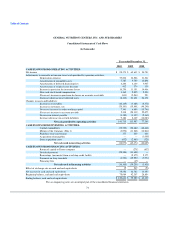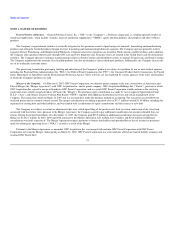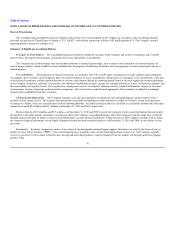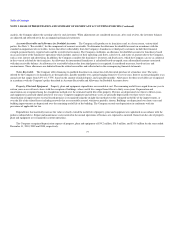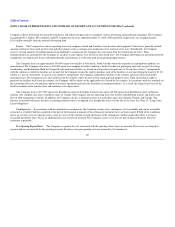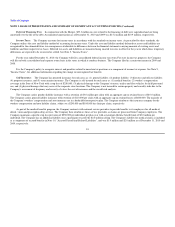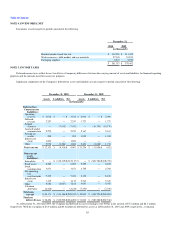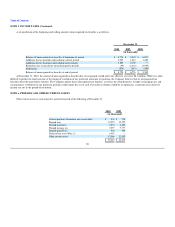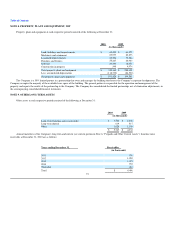GNC 2011 Annual Report Download - page 87
Download and view the complete annual report
Please find page 87 of the 2011 GNC annual report below. You can navigate through the pages in the report by either clicking on the pages listed below, or by using the keyword search tool below to find specific information within the annual report.
Table of Contents
NOTE 2. BASIS OF PRESENTATION AND SUMMARY OF SIGNIFICANT ACCOUNTING POLICIES (Continued)
Stock Compensation. The Company utilizes the Black-Scholes model to calculate the fair value of options. The resulting compensation cost is
recognized in the Company's financial statements over the option vesting period.
Foreign Currency. For all foreign operations, the functional currency is the local currency. In accordance with the standard on foreign currency
matters, assets and liabilities of those operations, denominated in foreign currencies, are translated into U.S. dollars using period-end exchange rates, and
income and expenses are translated using the average exchange rates for the reporting period. Gains or losses resulting from foreign currency transactions are
included in results of operations.
Strategic alternative costs. The Company recognizes expenses incurred in the exploration of strategic alternatives as they are incurred. In 2010, the
Company recognized $3.5 million of these expenses.
Financial Instruments and Derivatives. On January 1, 2009, the Company adopted the revised accounting standards on disclosure of derivative
instruments and hedging activities. This new standard expands the current disclosure requirements. This new standard provides for an enhanced understanding
of (1) how and why an entity uses derivative instruments, (2) how derivative instruments and related hedged items are accounted for under previous standards
and their related interpretations, and (3) how derivative instruments affect an entity's financial position, financial performance, and cash flows.
As part of the Company's financial risk management program, it uses certain derivative financial instruments. The Company does not enter into
derivative transactions for speculative purposes and holds no derivative instruments for trading purposes. The Company uses derivative financial instruments
to reduce its exposure to market risk for changes in interest rates primarily in respect of its long term debt obligations. The Company tries to manage its
interest rate risk in order to balance its exposure to both fixed and floating rates while minimizing its borrowing costs. Floating-to-fixed interest rate swap
agreements, designated as cash flow hedges of interest rate risk, are entered into from time to time to hedge the Company's exposure to interest rate changes
on a portion of the Company's floating rate debt. These interest rate swap agreements convert a portion of the Company's floating rate debt to fixed rate debt.
Interest rate floors designated as cash flow hedges involve the receipt of variable-rate amounts from a counterparty if interest rates fall below the strike rate on
the contract in exchange for an upfront premium. The Company records the fair value of these contracts as an asset or a liability, as applicable, in the balance
sheet, with the offset to accumulated other comprehensive income (loss), net of tax. The Company measures hedge effectiveness by assessing the changes in
the fair value or expected future cash flows of the hedged item. The ineffective portions, if any, are recorded in interest expense in the current period.
Derivatives designated as hedging instruments have been recorded in the consolidated balance sheet at fair value as follows:
Fair Value
Balance Sheet Location December 31, 2010 December 31, 2009
(in thousands)
Interest
Rate
Products Other current liabilities $ 4,395 $ —
Interest
Rate
Products Other long-term liabilities $ 3,074 $ 14,679
82




